Polished concrete flooring – everything you need to know
Fallen hard for smooth-as-ice polished concrete flooring? Find out if it ticks every box with our need-to-know guide

Hard-wearing, easy to clean and dust-mite resistant, it’s little wonder polished-concrete flooring is so popular. The industrial look is very on trend too, plus it works brilliantly with underfloor heating.
What is polished concrete?

Flooring made from concrete, either raw or coloured, which has been polished and sealed to create an industrial-style, non-porous surface.
The concrete is treated with diamond-polishing tools and is often finished to a grit level of 800, 1,500 or 3,000 (the higher the grit, the shinier the floor).
See this polished concrete makeover: Before and after: demolishing two split-level extensions created a dream kitchen
How much does a polished concrete floor cost?
Costs vary from £80 to £450sq m, depending if it’s levelled by machine or trowelled by hand.
How is a polished concrete floor installed?
Techniques vary but most polished-concrete floors are poured in a single layer, 10cm-thick. The next day, expansion cuts are sawn into the floor, encouraging inevitable shrinkage cracks to form in a neat line. These are then filled with an expandable, colour-matched sealant. Finally the floor is cleaned, polished and sealed.
Choose a specialist installer with a quality track record - the finished floor should offer good depth of tone and lustre, with a dense hardwearing finish,' advises Jonathan Reid, Director at Greymatter Concrete.
Get the Ideal Home Newsletter
Sign up to our newsletter for style and decor inspiration, house makeovers, project advice and more.
How long does it take to fit a polished concrete floor?
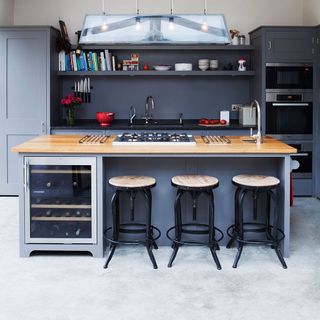
It depends on the size and temperature of the room, plus the installation methods chosen, but allow around seven to 10 days for a 10cm-thick floor. It will also need to be resealed in time to keep it waterproof.
Who are good suppliers of concrete flooring?
● GreyMatter Concrete consults and advises on all things concrete, helping to ensure
a high-quality finish and to minimise disappointment.
Colour choice
● Steyson’s 40 years’ experience has made it the go-to for architects and interior designers; coloured concrete is a speciality.
● Lazenby has superior knowledge and makes concrete using recycled materials and from local suppliers to further reduce its carbon footprint.
How do I fake a concrete floor?
1. Pick porcelain
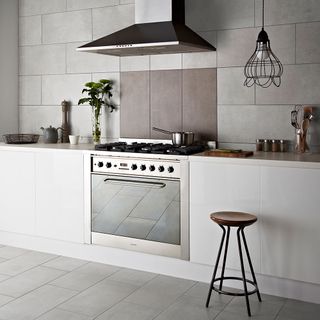
This robust porcelain tile comes in several muted industrial colours
Buy now: Tekno Bone porcelain tiles, £36.94 per sq m, Topps Tiles
2. Skim a layer of resin
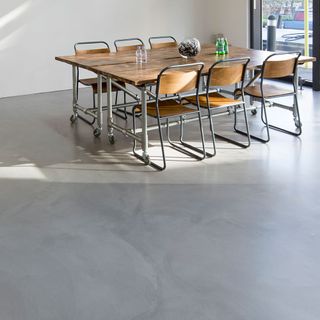
Resin can be applied in a much thinner layer and is less prone to cracks.
Enquire online: MicroCrete, from £120 per sq m, The Resin Floor Co
3. Keep cosy with vinyl
You'll find this luxury slip- and water resistant vinyl warmer underfoot – and it comes with a 15-year guarantee.
Buy online: Tadao Ando concrete vinyl tiles, £42.95 per sq m, Harvey Maria
Will a polished concrete floor crack?
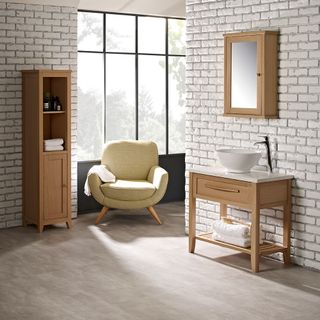
There’s always the possibility, but many people love the pattern and imperfection of fine lines. Shrink-reducing additives and anti-crack reinforcing help to minimise larger cracks. Sudden temperature changes are the main cause so it’s important to introduce heating, particularly underfloor, slowly.
Can you retro-fit a polished concrete floor?
It’s far easier to install polished concrete in a new-build or extension, before doors and skirting boards are fitted. Laying it in an existing room will require the flooring to be ripped up and skirting replaced. Doors may also need to be re-hung. A micro-concrete floor, in a thinner 5-7mm layer, is another option.
Hopefully, we've provided all the advice you need, so you can decide if polished concrete will work for you.

Linda Clayton is a professionally trained journalist, and has specialised in product design, interiors and fitness for more than two decades. Linda has written for a wide range of publications, from the Daily Telegraph and Guardian to Homes & Gardens and Livingetc. She has been freelancing for Ideal Home Magazine since 2008, covering design trends, home makeovers, product reviews and much more.
-
 What colours work with navy kitchens? These are the go-to colour combos you need to know about
What colours work with navy kitchens? These are the go-to colour combos you need to know aboutTry these designer-approved colour combos to create a navy kitchen you’ll never want to leave
By Alisha Solanki
-
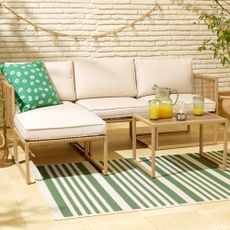 Tesco's designer-look modular sofa set is the star of its returning outdoor living range – and it's less than £300
Tesco's designer-look modular sofa set is the star of its returning outdoor living range – and it's less than £300It's a steal for small gardens
By Jullia Joson
-
 Is Habitat the new Zara Home? The affordable quiet luxury alternatives to snap up fast
Is Habitat the new Zara Home? The affordable quiet luxury alternatives to snap up fastHabitat is the new budget-friendly alternative for Zara Home – as lookalike quiet luxury homewares sell for less
By Sara Hesikova